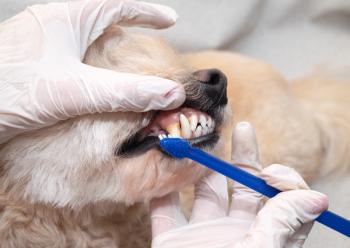
Clinical insights into feline mast cell disease

Zachary Wright, DVM, DACVIM (Oncology) highlights the unique clinical presentations of mast cell disease in cats compared to dogs.
In this interview with dvm360 at our Fetch National Harbor conference, Zachary Wright, DVM, DACVIM (Oncology) explained the difference between feline mast cell disease and canine mast cell disease, including unique challenges and differences in diagnosing and managing mast cell diseases in feline patients, with note that cutaneous mast cell tumors in cats, especially when located on the head and neck, are typically benign, there are more concerns forms that impact feline patients.
Below is a full transcript, edited lightly for clarity.
dvm360: Starting with your name, can you tell us a little bit about yourself?
Zachary Wright, DVM, DACVIM (Oncology): My name is Dr Zach Wright. I'm a veterinary medical oncologist and the medical director at VCA Dallas in Dallas, Texas. And I also chair the Mars Veterinary Health Oncology Advisory Board.
dvm360: How does the biological behavior of feline mast cell disease typically compare to its canine counterpart?
Wright: Cats don't get enough attention, right? All of this stuff is about dogs. So we're, I'm happy to focus on cats. But I think the biggest take home about with cats and mast cell diseases, it's essentially a different disease process than dogs. Yes, cats absolutely will get cutaneous mast cell tumors, particularly of the head and neck, but simplistically, those are most often a benign process, not something we have to clinically worry about. The diseases that we need to worry about for cats are the visceral forms, where they arise in either the spleen or the intestines. And again, those are a very different clinical presentation and clinical outcome compared to a dog with a mast cell tumor on its elbow.
Primary visceral disease in dogs is noted, but it's quite rare. And so for cats, really you we can end up on a diagnosis of visceral mast cell disease with cats who are generally [have adverse drug reactions] and have a variety of clinical symptoms, or poor doers, chronic vomiting, lethargy, decreased appetite, any collection of those things, and it's often related to both the location an intestinal mast cell tumor can cause a full or partial obstruction, but also the systemic histamine toxicity associated with with splenic involvement.
So again, just a very different clinical presentation, while both canine and feline are intended to be surgical diseases, and that's true even in the visceral form, I think the biggest take home is that their clinical presentation is very different. We're not looking for a skin tumor when it comes to a collection of these mast cell diseases in cats.
Newsletter
From exam room tips to practice management insights, get trusted veterinary news delivered straight to your inbox—subscribe to dvm360.






